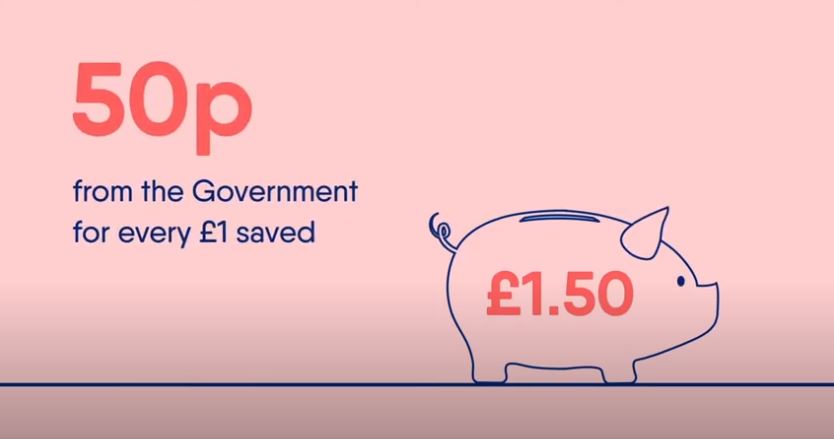How it works
Check if your employer offers our Help to Save eligibility tool through My Salary Finance

Choose an amount you want to save each month (up to a maximum of £50) to put into your Help to Save account. Use our calculator to see how much bonus you could earn.

Sign up for the Government Help to Save scheme, through the Salary Finance Help to Save dashboard.

Sit back and watch your savings grow. Your Help to Save account will be held with National Savings & Investments (NS&I), and it is instant access. So you can get hold of your money at any time if you need it.

At the end of each two year period, savers get a 50% bonus based on the highest balance achieved. The scheme is open for four years, and those that save £50 each month could receive a bonus of £300 per year, up to a maximum of £1,200 over four years.







Our App
If your employer offers benefits from Salary Finance, you can access our App on either the App Store or Google Play.
App Store Google Play



Help to Save is a government-backed saving scheme. You can find more information on the GOV.UK guide here: https://www.gov.uk/get-help-savings-low-income Salary Finance will help you find out if you are eligible for a Help to Save account with our eligibility tool. To see if you are eligible, go through My Salary Finance.
You can open a Help to Save account if you’re receiving Universal Credit and you (with your partner if it’s a joint claim) had take-home pay of £1 or more in your last monthly assessment period. Your take-home pay is your pay after deductions (such as tax or National Insurance). If you get payments as a couple, you and your partner can apply for your own Help to Save accounts. You need to apply separately. You also need to be living in the UK. If you live overseas, you can apply for an account if you’re either a: Crown servant or their spouse or civil partner member of the British armed forces or their spouse or civil partner If you are eligible, you will be able to apply for Help to Save through the HMRC Government Gateway portal. https://www.gov.uk/get-help-savings-low-income/eligibility
You can save between £1 and £50 each calendar month. You do not have to pay money in every month. You can pay money into your Help to Save account by debit card, standing order or bank transfer. You can pay in as many times as you like, but the most you can pay in each calendar month is £50. For example, if you have saved £50 by 8 January you will not be able to pay in again until 1 February. You can only withdraw money from your Help to Save account to your bank account.
You get bonuses at the end of the second and fourth years. They’re based on how much you’ve saved. You can earn 2 tax-free bonuses over 4 years. You’ll get any bonuses you’ve earned even if you withdraw money. After your first 2 years, you’ll get a first bonus if you’ve been using your account to save. This bonus will be 50% of the highest balance you’ve saved. After 4 years, you’ll get a final bonus if you continue to save. This bonus will be 50% of the difference between 2 amounts: the highest balance saved in the first 2 years (years 1 and 2) the highest balance saved in the last 2 years (years 3 and 4) If your highest balance does not increase, you will not earn a final bonus. The most you can pay into your account each calendar month is £50, which is £2,400 over 4 years. The most you can earn from your savings in 4 years is £1,200 in bonus money. Your bonus is paid into your bank account, not your Help to Save account. Example You pay in £25 every calendar month for 2 years. You do not withdraw any money. Your highest balance will be £600. Your first bonus is £300, which is 50% of £600. In years 3 and 4 you save an extra £200 to grow your highest balance from £600 to £800. Your final bonus is £100, which is 50% of £200. Even though you withdrew some money after your balance was £800, this does not affect your bonus.
If you withdraw money it will be harder for you to: - grow your highest balance - earn the largest possible bonuses Withdrawing money could mean you are not able to earn a final bonus - depending on how much you withdraw and when.
Salary Finance offers a Help to Save eligibility tool, where you can find all the information on Help to Save. It will guide you to the Government Gateway from where you'll need to sign in to apply for Help to Save. If you do not already have sign in details, you’ll be able to create them when you sign in for the first time. You’ll need your National Insurance number or postcode and 2 of the following: a valid UK passport a UK photocard driving licence issued by the DVLA (or DVA in Northern Ireland) details of a tax credit claim, if you made one details from a Self Assessment tax return in the last 2 years, if you made one information held on your credit record, if you have one (such as loans, credit cards or mortgages) You’ll be asked to provide your UK bank details when you apply.

